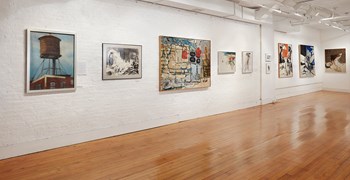Bernini; or, Art & Life— What Do They Have to Do with Each Other?
By Anthony Romeo, AIA, NCARB. Early in my career, while working on designs for a new building lobby requiring Italian marble, my supervisor asked me to travel to Italy to visit the quarry and select marble for the project. When I mentioned this in an Aesthetic Realism class, Ellen Reiss, the Chair of Education, asked what qualities I cared for in marble. I had worked with marble and knew some of its many varieties. Ms. Reiss asked about opposites central to its beauty: “Do you think marble is warm and cool at the same time, and there can be a quality of warmth in the coolness?” I said “Yes!” I’d never thought of marble in this way!
She suggested that I find five instances of marble used in a way I saw as beautiful, and she said: “Try to see with each one why it’s beautiful. And you can ask, what does that beauty have to do with the marble itself, as well as what’s done to it.”
This was the beginning of my looking into the meaning of the materials I work with as an architect. And I thank Ellen Reiss for the way she’s encouraged me to ask: What do art and life have to do with each other? One of the artists I’ve come to love as a result of my study is the great Baroque sculptor and architect Gian Lorenzo Bernini.
As I studied his architecture and sculpture, I was thrilled to see how deeply both are explained by this groundbreaking Aesthetic Realism principle stated by its founder, Eli Siegel: “All beauty is a making one of opposites, and the making one of opposites is what we are going after in ourselves.” The opposites of warmth and coolness, so central in the life and work of Bernini, bring up ethical questions which are crucial in every person’s life.
1. Warmth & Coolness: Can We Be Intense with Accuracy?
As a young man, I could be very intense and irate—particularly when I sensed some injustice to me. Friends called me a “hothead.” But because I didn’t like thinking about other people and what they deserved, my intensity was often inaccurate, and I didn’t like being deeply affected by things, which made me cold. In The Right of Aesthetic Realism to Be Known, Ellen Reiss wrote:
“Coldness is an aspect of contempt. We feel we have ourselves in a kingly or queenly fashion if nothing can move us….We despise ourselves for being cold, we ache from our coldness, because our greatest desire is to like the world, to feel our living relation to every thing and person.”
Read mor











